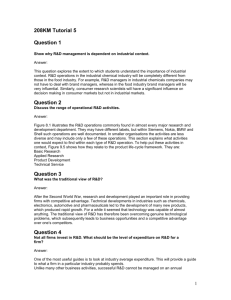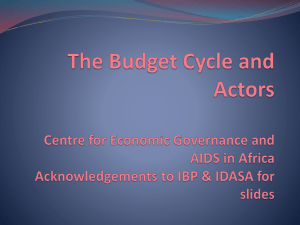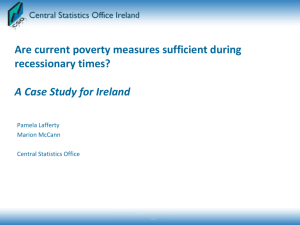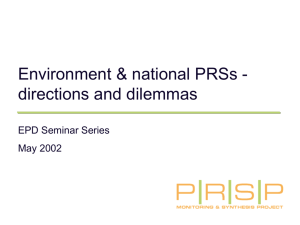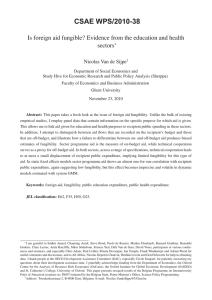Zambia - Independent budget analysis and public
advertisement
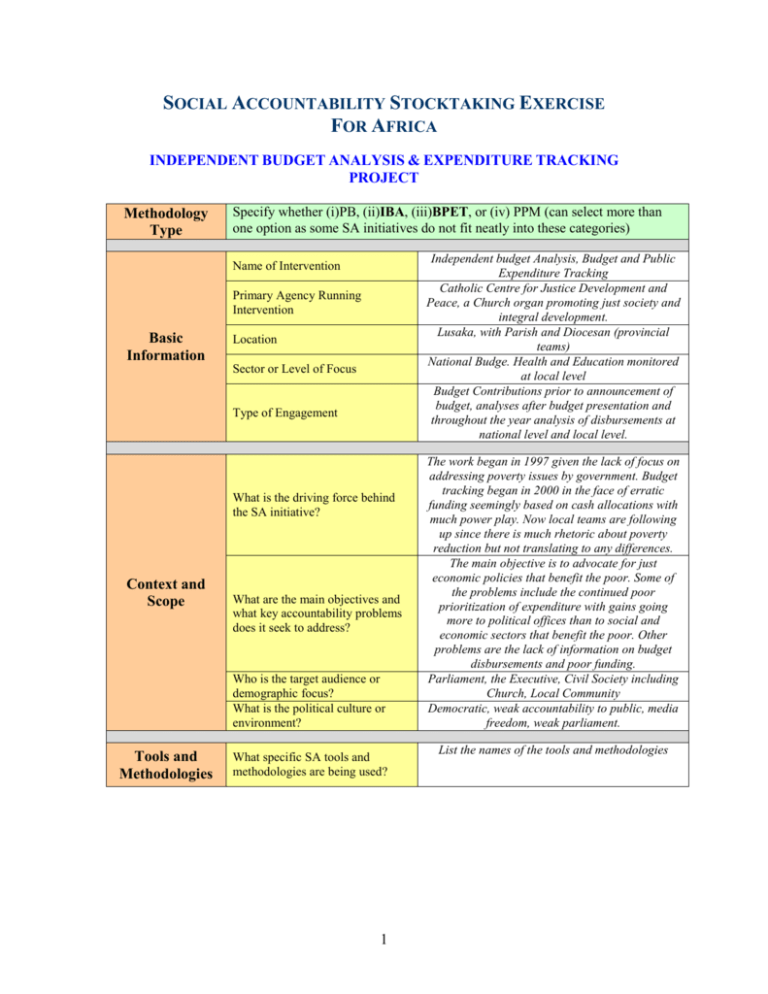
SOCIAL ACCOUNTABILITY STOCKTAKING EXERCISE FOR AFRICA INDEPENDENT BUDGET ANALYSIS & EXPENDITURE TRACKING PROJECT Methodology Type Specify whether (i)PB, (ii)IBA, (iii)BPET, or (iv) PPM (can select more than one option as some SA initiatives do not fit neatly into these categories) Independent budget Analysis, Budget and Public Expenditure Tracking Catholic Centre for Justice Development and Peace, a Church organ promoting just society and integral development. Lusaka, with Parish and Diocesan (provincial teams) National Budge. Health and Education monitored at local level Budget Contributions prior to announcement of budget, analyses after budget presentation and throughout the year analysis of disbursements at national level and local level. Name of Intervention Primary Agency Running Intervention Basic Information Location Sector or Level of Focus Type of Engagement What is the driving force behind the SA initiative? Context and Scope What are the main objectives and what key accountability problems does it seek to address? Who is the target audience or demographic focus? What is the political culture or environment? Tools and Methodologies What specific SA tools and methodologies are being used? 1 The work began in 1997 given the lack of focus on addressing poverty issues by government. Budget tracking began in 2000 in the face of erratic funding seemingly based on cash allocations with much power play. Now local teams are following up since there is much rhetoric about poverty reduction but not translating to any differences. The main objective is to advocate for just economic policies that benefit the poor. Some of the problems include the continued poor prioritization of expenditure with gains going more to political offices than to social and economic sectors that benefit the poor. Other problems are the lack of information on budget disbursements and poor funding. Parliament, the Executive, Civil Society including Church, Local Community Democratic, weak accountability to public, media freedom, weak parliament. List the names of the tools and methodologies Budget contributions done at national level. Public forums held at which contributions are presented to government and other citizens have chance to engage with Minister of Finance. Used At local level, focus group discussions and prioritization done to come up with district preferences for the next budget, these are presented to the Permanent Secretary of the province and also sent to capital. Post budget analyses done after budget presentation. Forum held at which technocrats and Finance Minster are represented. Post Budget analyses shared with Parliamentarians. Workshops held for Members of Parliament. Held for different political parties. Briefly describe the methodology(/ies) or tools used. Newspaper articles written, booklets circulated to civil society on analysis of budget. Proposals for changes to budget submitted to Minister for cabinet consideration. Church hierarchy and provincial teams given info. on budget to engage with Ministers when they travel to disseminate the budget. Budget training for church groups and other civil society groups. During the year analyses done on disbursements. Local Justice and Peace teams tracking exercise done throughout the year. They look at objectives of the sectors and compare how funds are flowing also conduct group discussions to get community’s views. Local teams conduct interviews with government service providers and also find out timeliness, adequacy and reporting mechanisms of What advocacy and media activities support the initiative? How inclusive was the intervention? 2 Meetings with Minister and Deputy ministers of Finance, meetings with Secretary of treasury, meetings with Budget office, Meetings with Members of parliament. Meetings with donor organizations. Newspaper articles, booklets circulated, radio and TV discussions, collaboration with other groups in initiatives. Work done by Justice and peace teams, but work with communities for research and public forums, included in radio discussions. Participation Other Important Information or Comments Results and Impact What (if any) has been the impact of the initiative? What have been the incentives? A recognition by government of input into the budget process, a more deliberate poverty focus, even before introduction of PRSP, e.g. increases in allocations for welfare categories, adoption of free education policies with accompanying grants for schools. Increased public engagement on the budget, e.g. some government agents calling on collaboration in tracking fertilizer subsidy, changes in the tax threshold for income tax. Government inclusion of civil society groups in formulation processes. Is the methodology or initiative institutionalized? Are there any institutional linkages and partnerships been established with the government, parliaments, media, NGOs, communities etc.? Describe. This has happened, though legal framework has not been done. Contributions of the pre-budget are considered and sought during formulation of next budget. Linkages have been established with other groups working on different issues, e.g. PRSP. (If applicable) Has the initiative been scaled up? Repeated? What were the main outcomes of the SA initiative Bottlenecks/Problems What difficulties did the agency or NGO face, and how did they resolve them. (COMMENT: This section will yield rich insights on innovations that can be shared.) The provincial pre budget contributions are new but will increase in the next year, because there are now more relevant with activity based budgeting. Wider acceptance on the role of civil society in budget and expenditure issues by government at different levels. Public debate on expenditure choices and patterns is now quite strong. More discussion of expenditure choices for reduction f poverty and wealth creation. Slow release of information from government at central level. At local level teams face problems accessing info on disbursements, government resistance, high cost, persistence in addressing matters, linking with other groups. Inadequate human resource. Too much of a centralized system of government. www.ccjdp.org.zm Web sources Further References The work is done within the Church structures by members of justice and peace, who are themselves poor, from different parts of the country. But their work is in the communities that they live in. Capacities at local level are build. Anything that is important in the case that is not covered in the template Documents and Reports Available. Mulima Kufekisa Akapelwa akakapelwa@zec.org.zm Resource Persons/Contacts 3






